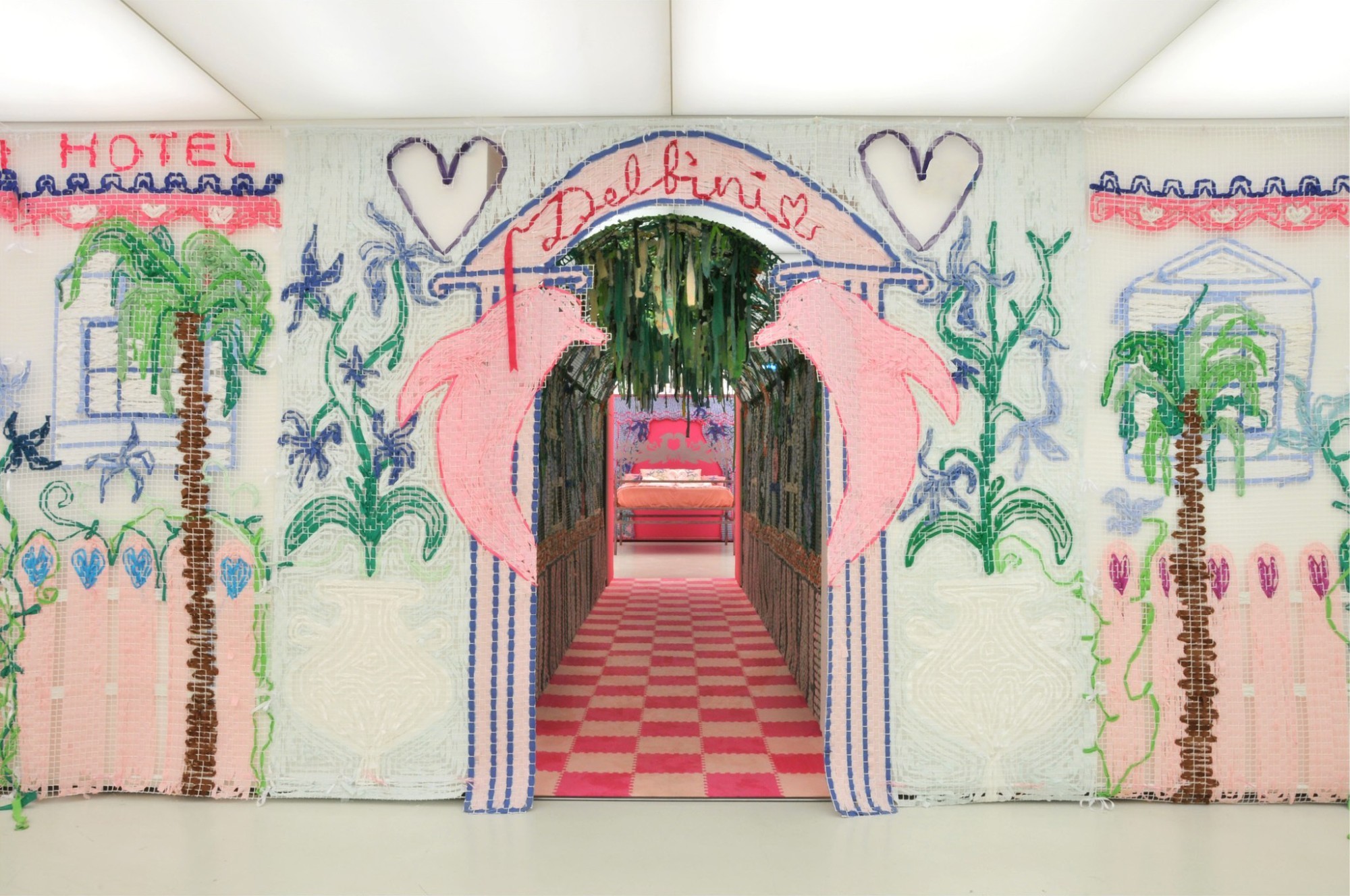
Plein Sud : In this new exhibition at the Collection Lambert, you invite visitors to immerse themselves in an imaginary world of cartoons, comics, marvellous tales and fantastic cinema... How did Delfunland come about, and what kind of world is it?
Delphine Dénéréaz : I was really inspired by the space itself, which gave birth to this desire for an imaginary city that unfolds in the space of the basement. I like to say that Delfunland is my dream house, like Barbie's, but stranger. It's an imaginary candy-pink town that once celebrated love with dolphins and delphinium. But little by little, this poisonous plant took over and forced the inhabitants of Delfunkand to flee. The exhibition focuses on this moment, when the flower gradually reclaims its rights in the abandoned town.
PS : What pre-existed Delfunland? What existed before this décor, saturated with colour and detail, was displayed in the basement of the Collection?
DD : One of my pieces, entitled La Petite Chapelle Des fleurs, was the first step towards this installation: an abandoned place, covered in vegetation, that nevertheless invites contemplation.
PS : The entire Delfunland installation was designed for and on site. How long does it take to produce an exhibition like this?
DD : I spent a month in residence in February 2022 doing drawings and research, and then, with Mathilde Grenet who assisted me throughout production, we started weaving the pieces on 2 October.
PS : Behind this highly entertaining and marvellous, colourful and childlike side, there is a whole other side to the story. Could this dark, invisible, buried part of the story be emerging from the background at any moment?
DD : Yes, this feeling of strangeness is something we're looking for. There's a fascination and almost a repulsion in the face of all this pink and this invasive flower. It's almost a vision of the end of the world.
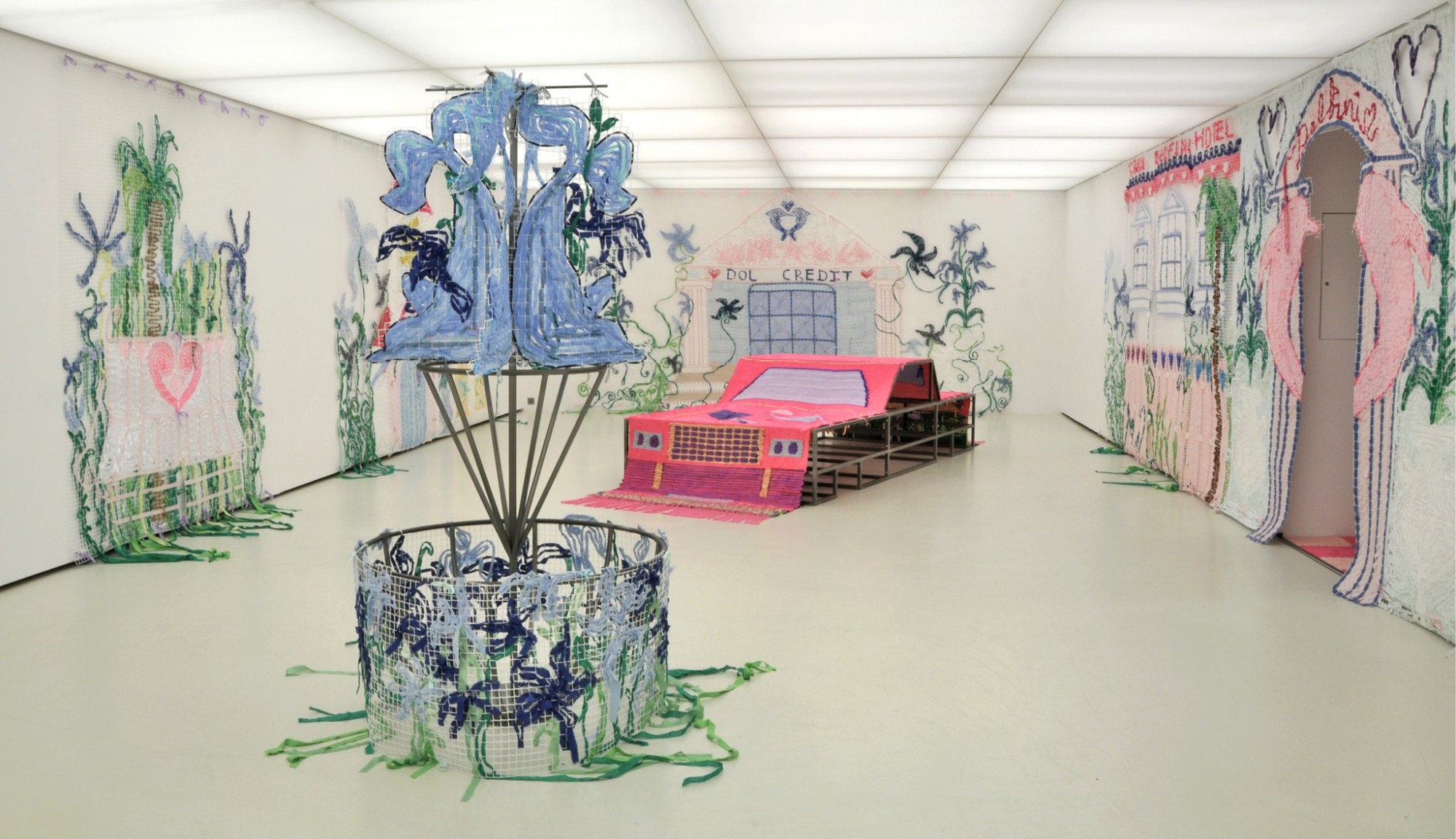
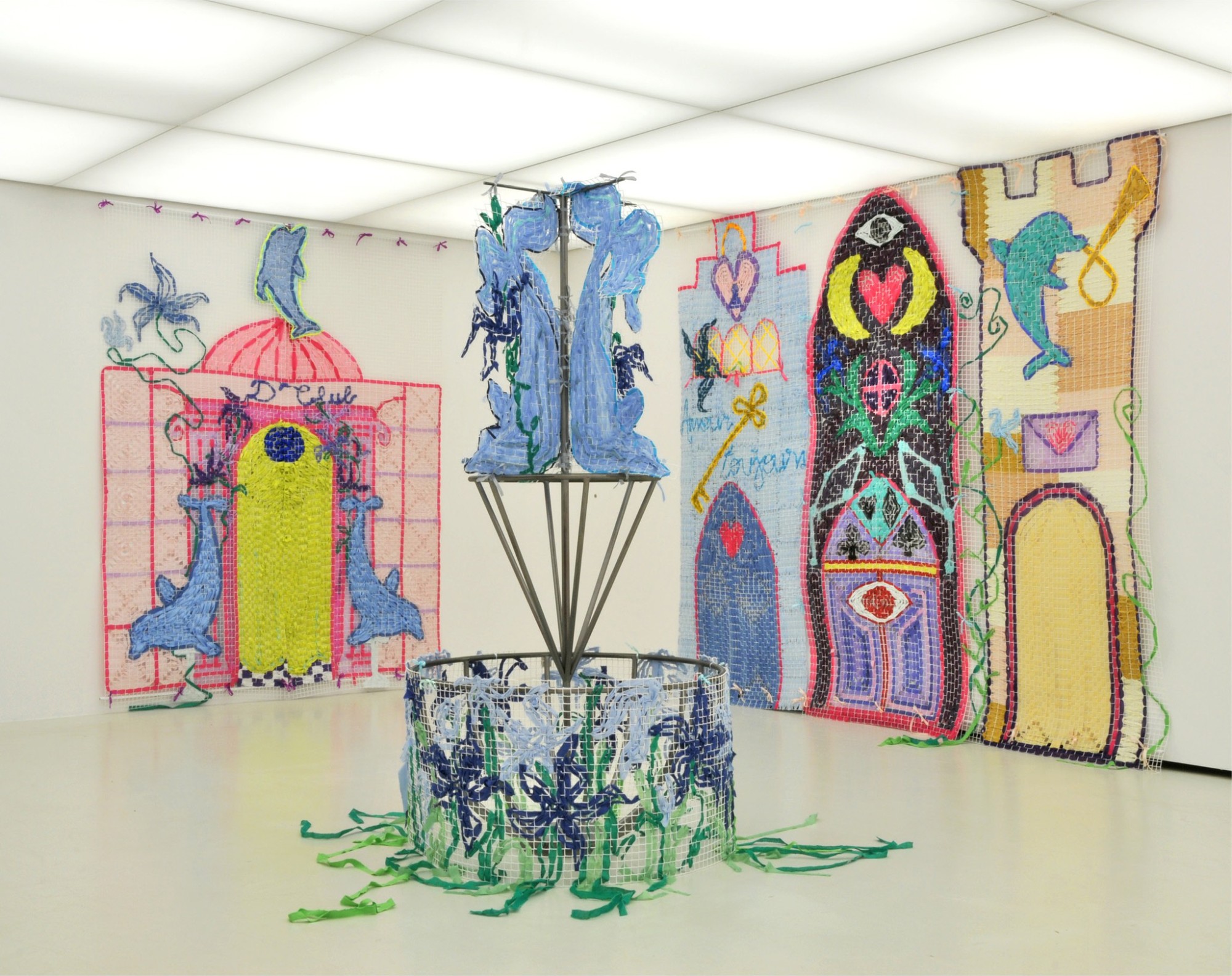
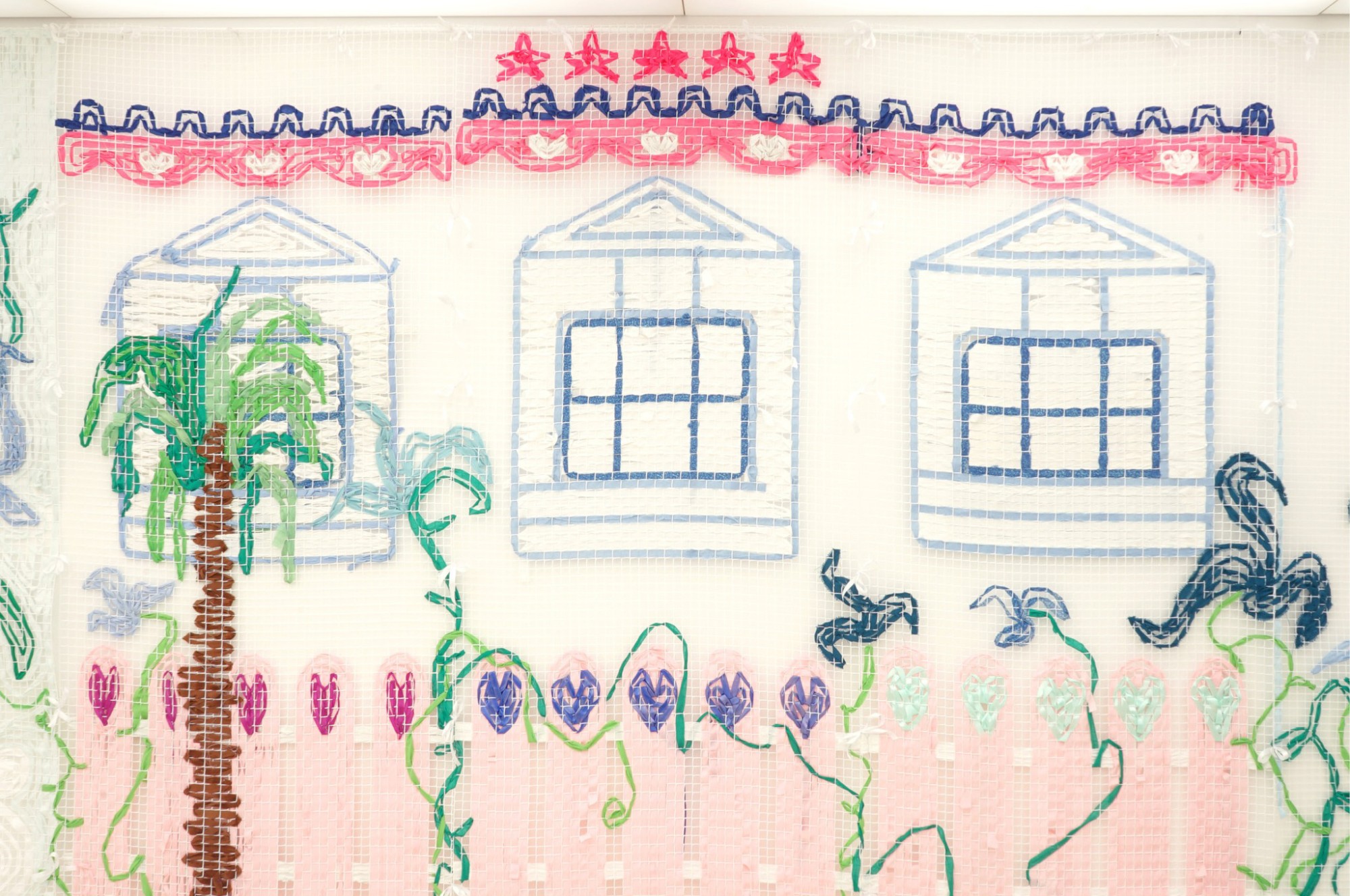
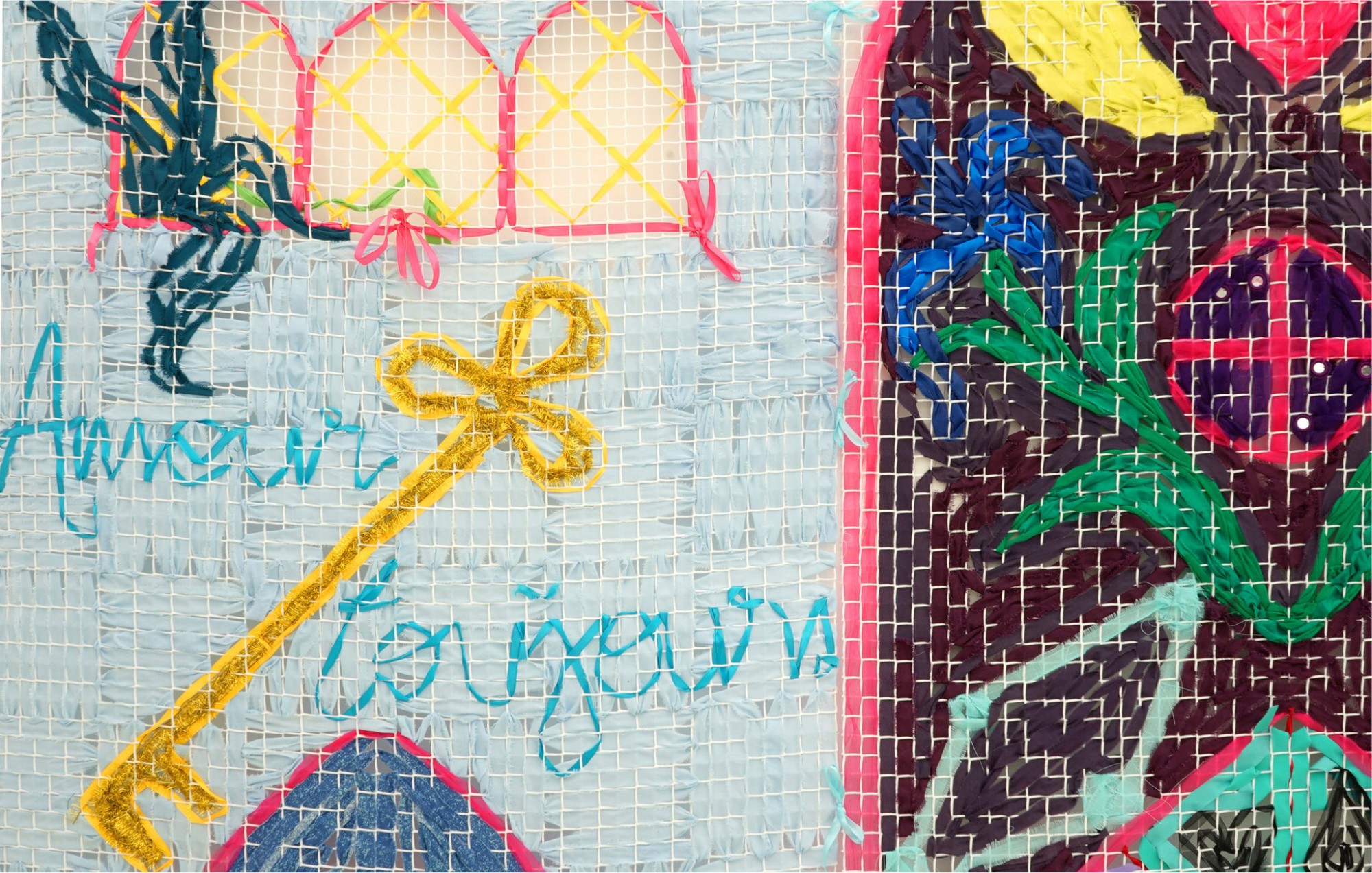
PS : For the last five years, you've had one exhibition after another... Artorama in 2022, the Villa Noailles in 2023, a solo show at the Slika gallery off the Lyon Biennial, another in a gallery housed in Tottenham stadium in London, a group show at the former Cartier-Bresson factory in Pantin... It never stops! And you don't just exhibit in France. Can you tell us about your latest experiences outside France?
DD : That's right! I took part in a group exhibition on textiles at a new art centre in Riyadh, Saudi Arabia, commissioned by the Ministry of Culture... It was quite an experience! Last November, I also took up a residency in Lagos, Nigeria, and the works I produced there are currently on show in a local gallery, so it's a great follow-up to this project.
PS : You were the guest artist for 2022 at the Villa Noailles art centre. What did this place inspire in you?
DD : Its architecture, colours and natural surroundings have been the inspiration for this collaboration throughout the year. I've spent time there from time to time throughout the year, staying from 2 to 10 days since December, and each time I've come, it's a new detail that has caught my eye.
PS : What is your creative process?
DD : I always work in the same way: I observe, I listen, I store up memories and images. An idea is born, which I put down on paper, the sketch being an essential stage in my work. Finally, I select the materials I'm going to weave, and then I move on to the loom.
PS : You create your work with wires... How did you come to use this medium?
DD : I did a master's degree in textile design at La Cambre in Brussels. As well as studying the history of textiles, I spent five years learning how to weave, knit, create flexible surfaces, dye and screen-print. When I moved back to my parents' house in the south of France, I picked up a large loom and started to clear out the cupboards in the house where time-worn domestic textiles were nestled. I discovered this practice during my studies. For the last five years, my artistic practice has been exclusively weaving lirette.
PS : What does it involve?
DD : Collecting textiles, setting up the loom, preparing the materials and finally weaving. At the moment I'm moving more and more towards constructions based on weaving: I'm very interested in moving from the flat to volume, from the rigid to the supple. The repetition of gestures belongs to all the trades, and I enjoy trying to bring them together.
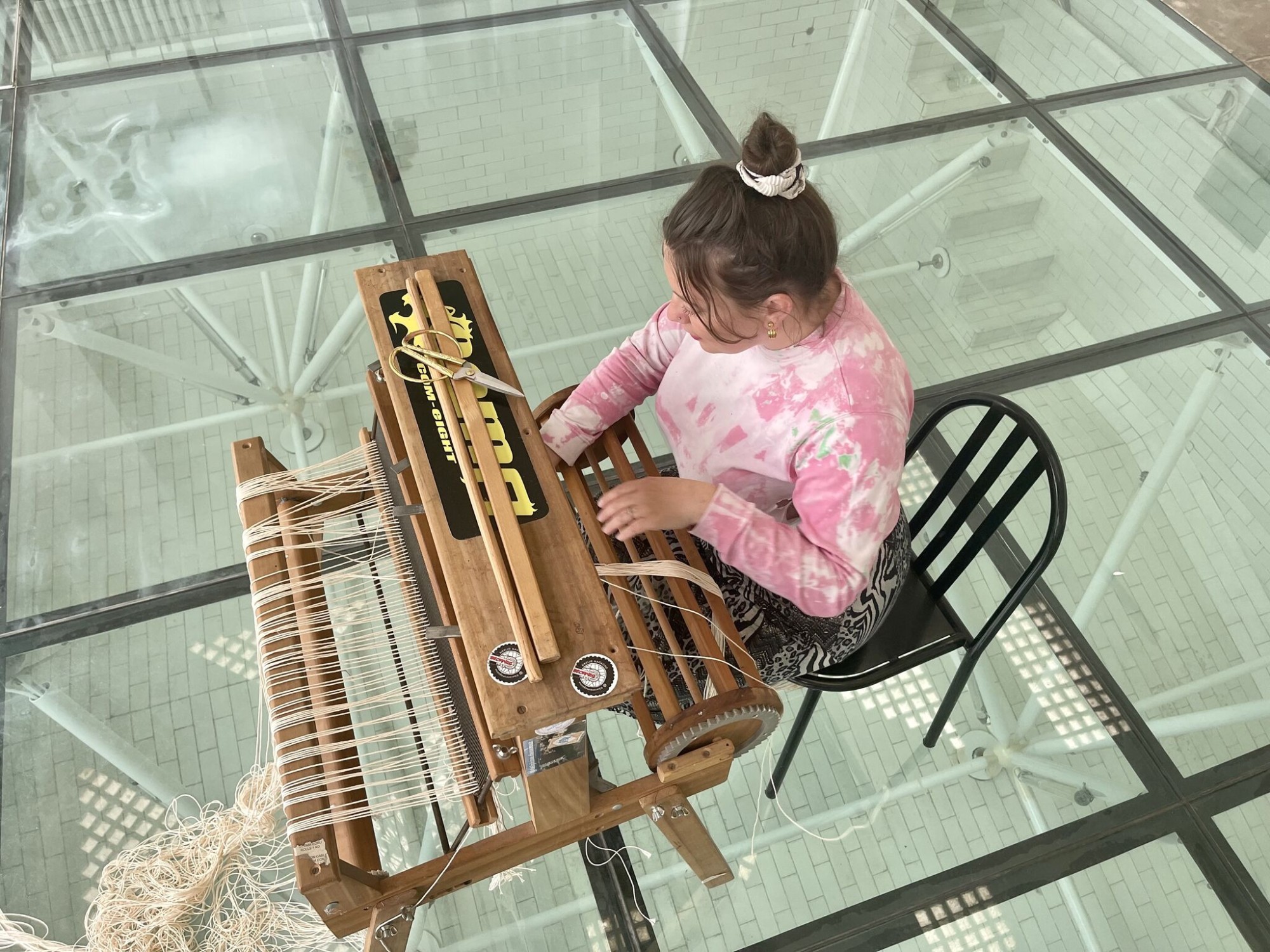
PS : Do you still walk around your residences with a weaving machine?
DD : No, it's just that during my residencies, I've developed a different way of weaving on surfaces that allow me to create larger pieces with more freedom of design. Sometimes, however, I bring along a small loom that fits perfectly into my car.
PS : Where do the fabrics and threads used in your work come from?
DD : From private individuals, who drop off boxes of old household linen at the workshop that have gone out of fashion and use because they have holes or stains...
PS : Are you still working as part of a collective called Monstera?
DD : Yes, we did a residency this summer in Mont-Dauphin, followed by a beautiful exhibition at La Poudrière during the summer, with all new pieces.
PS : Where do you work and where do you live?
DD : I've come back to live in my childhood home in the countryside: La Magnanarié, a former silk mill, in the family since 1962, acquired by my grandparents and then my parents. It's a large gîte that welcomes groups, and with my husband, Crabe Toro and my sister, we continue to run the gîte as well as hosting artists in residence, organising events and running a table d'hôtes... I live and work here, in a large, beautiful garden designed by my father over a period of more than thirty years.
PS : What are your next projects?
I'm taking part in the first edition of Nîmes' contemporary art triennial, La Contemporaine, which opens in April, under the artistic direction of Anna Labouze and Keimis Henni.